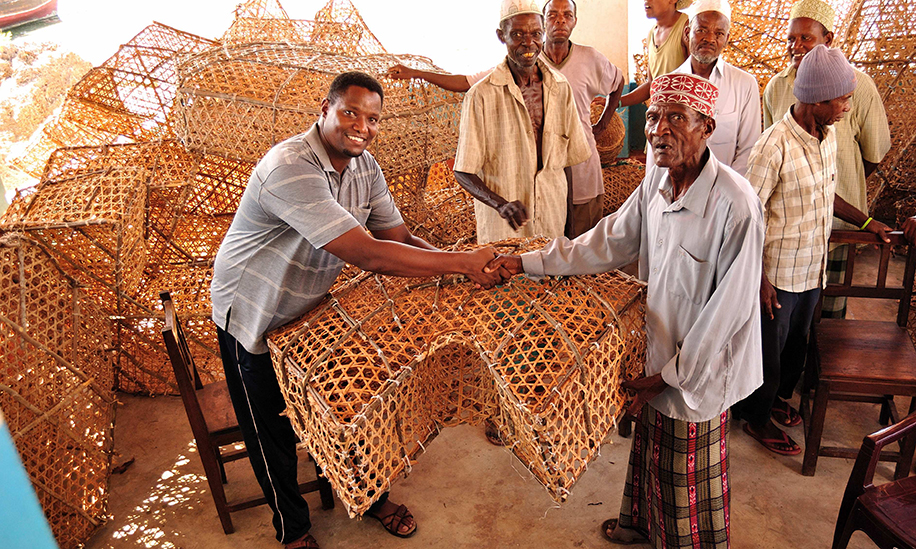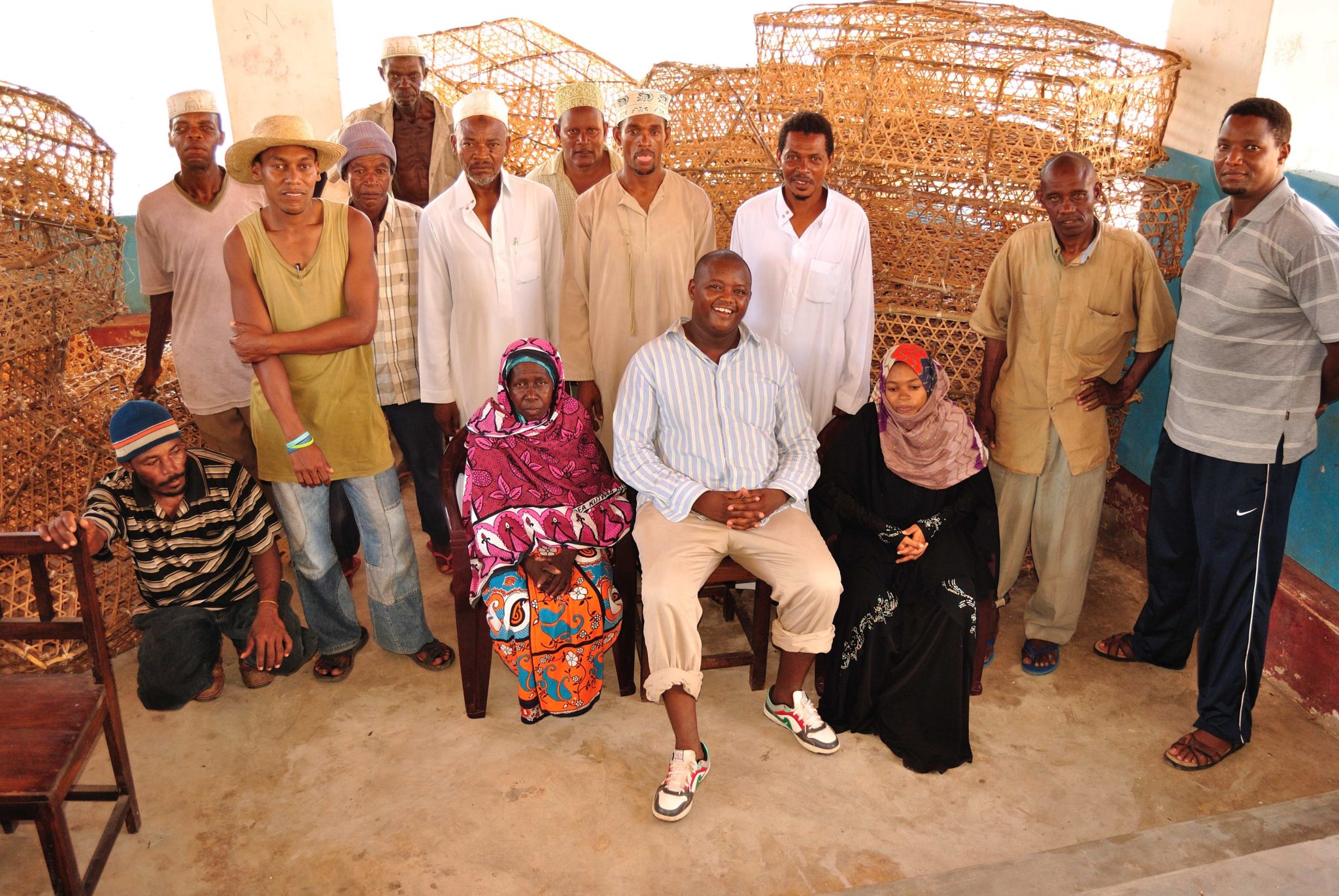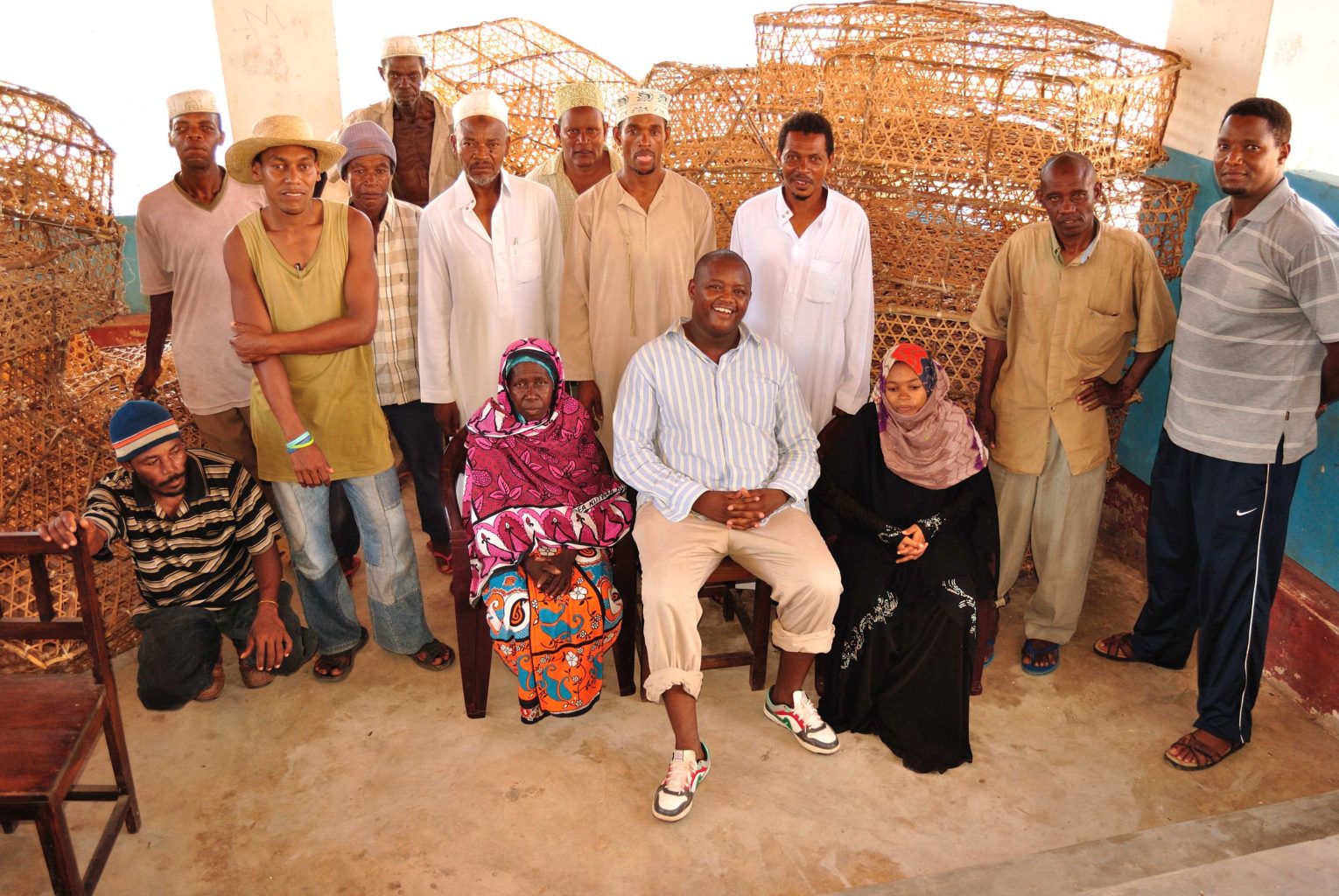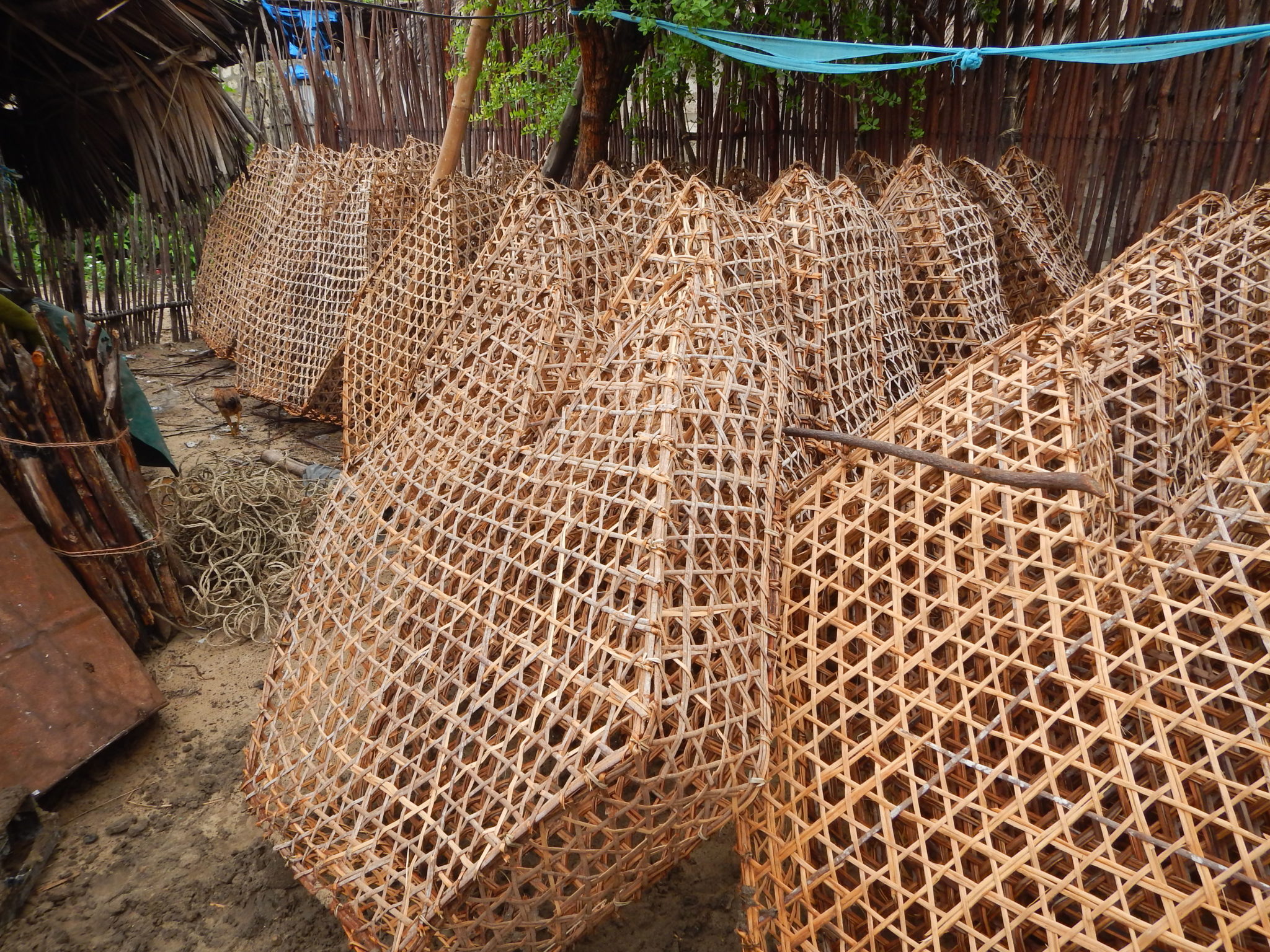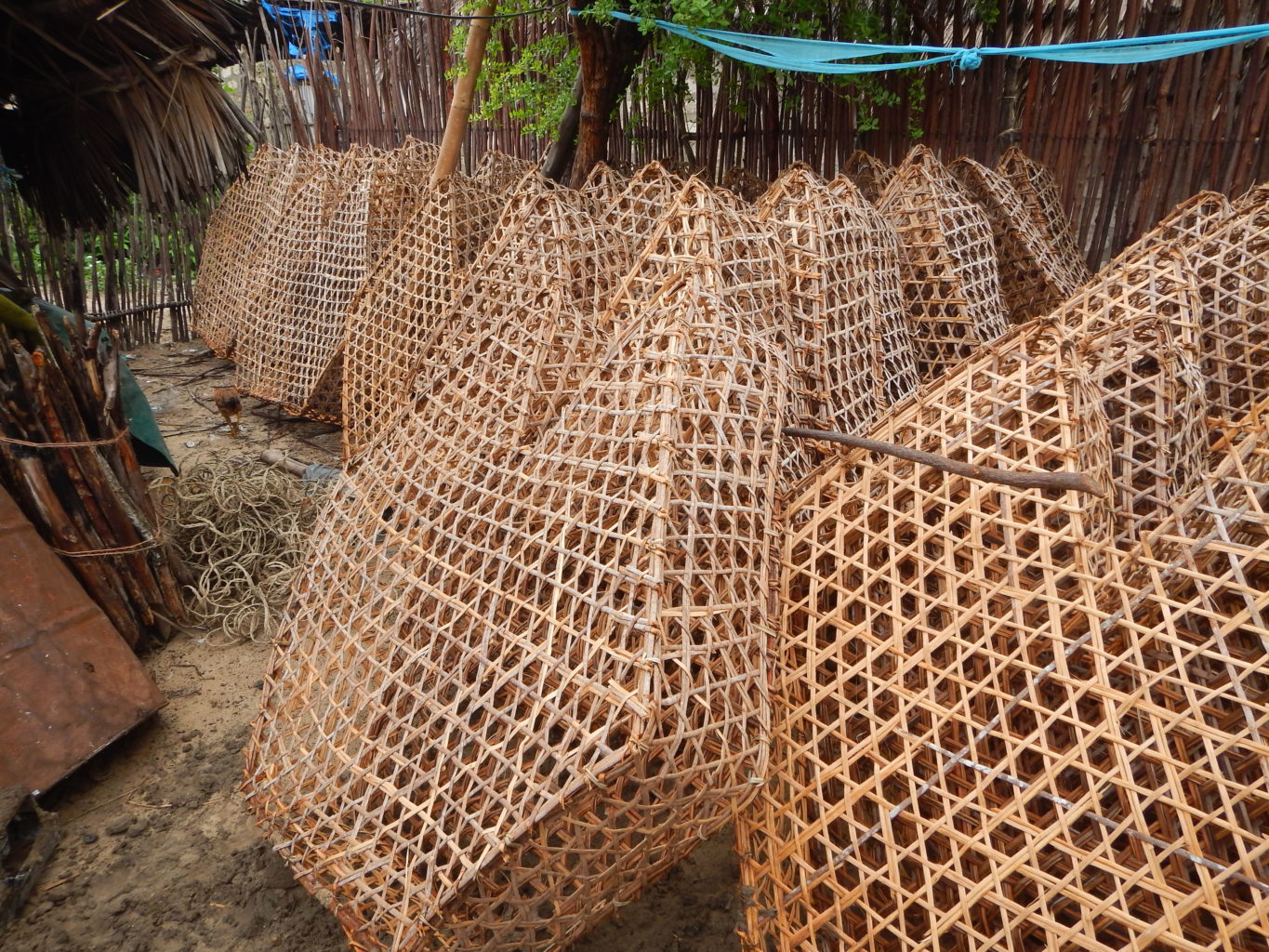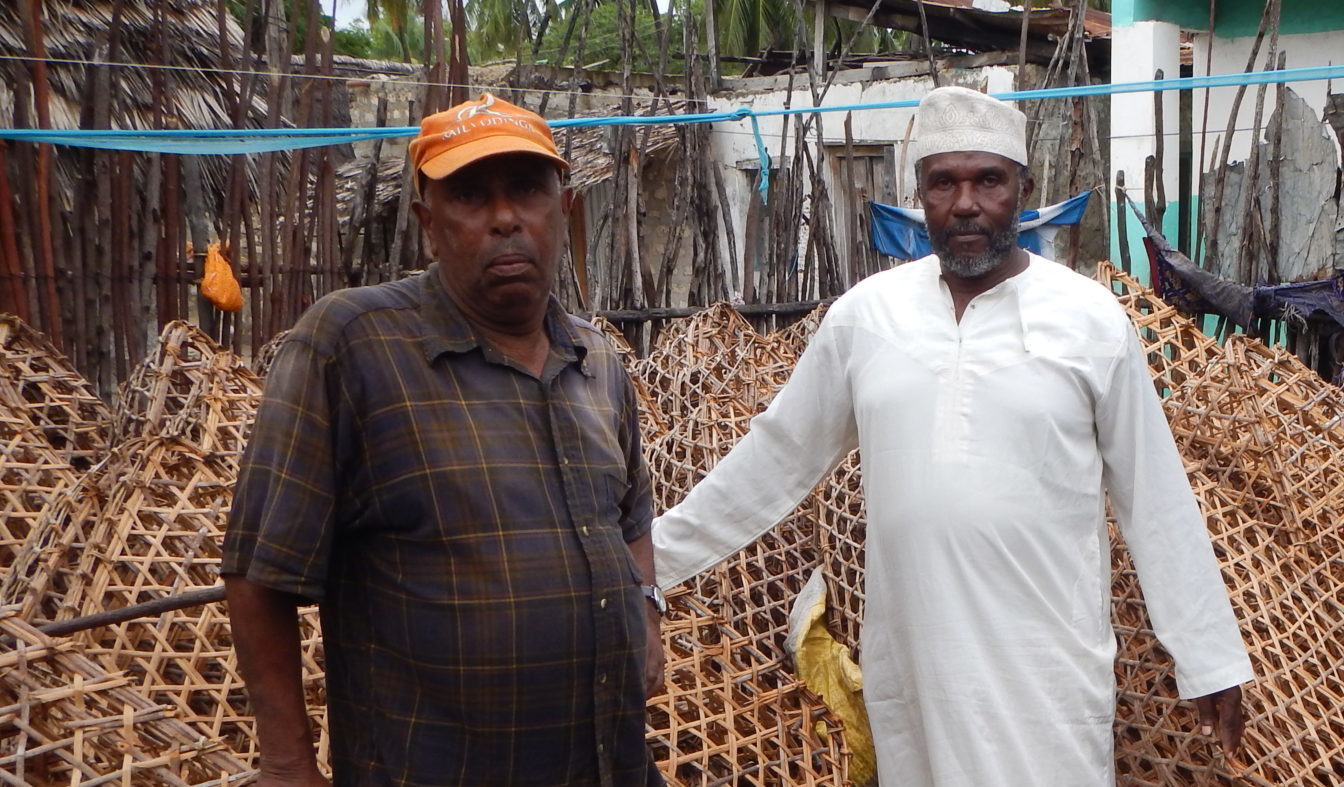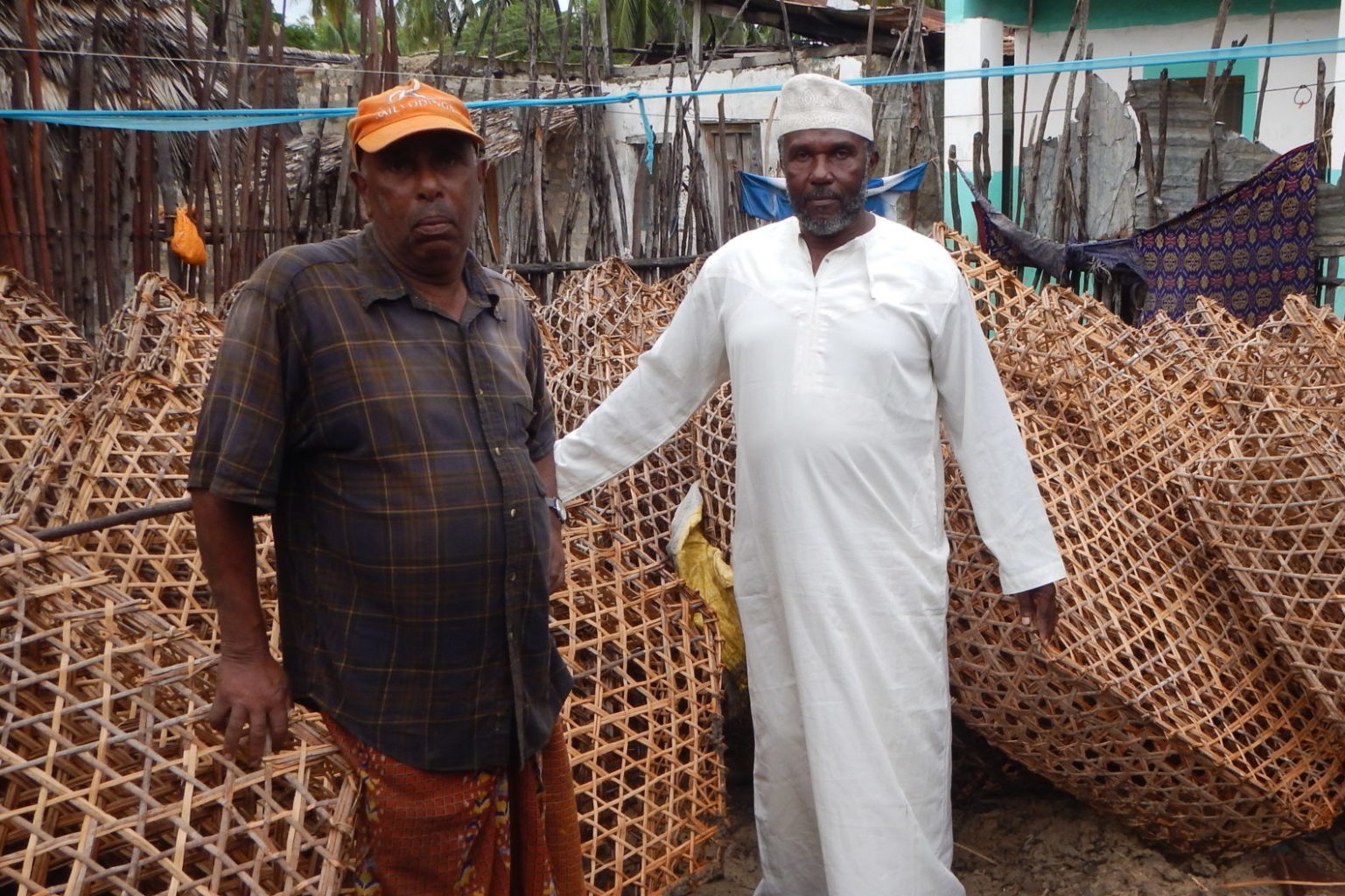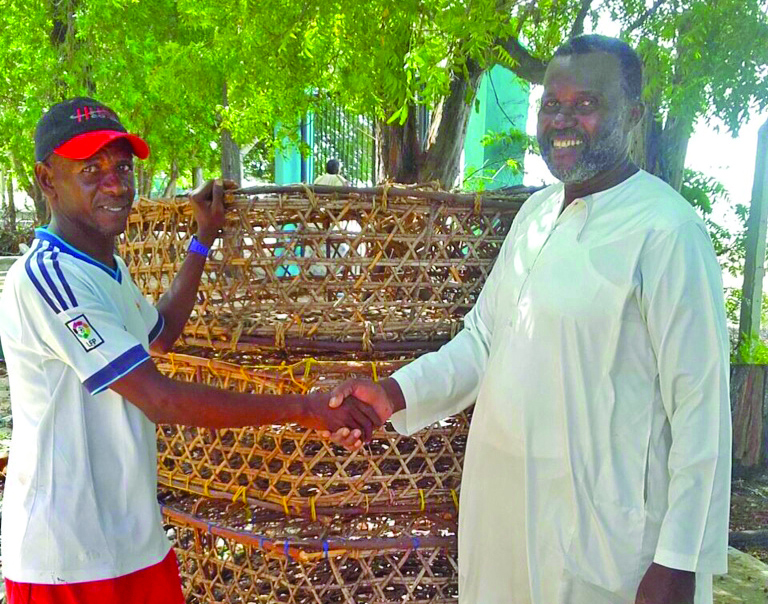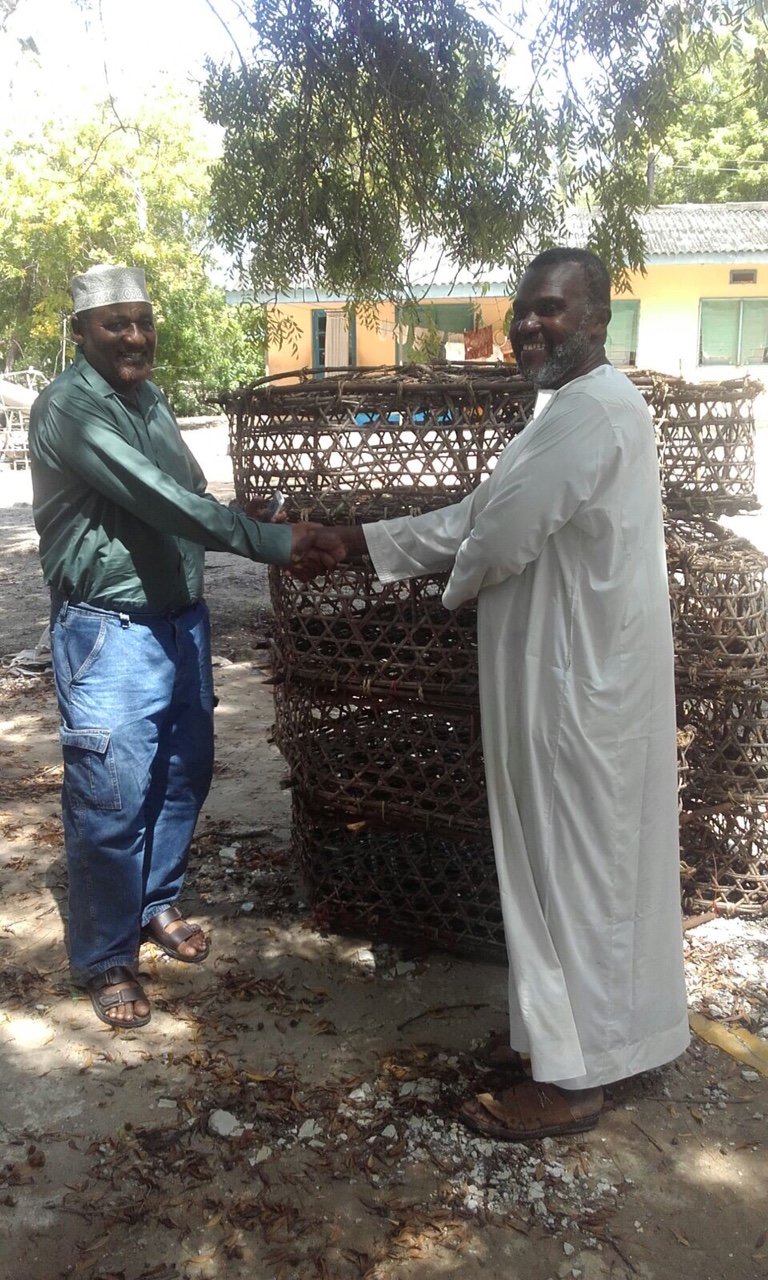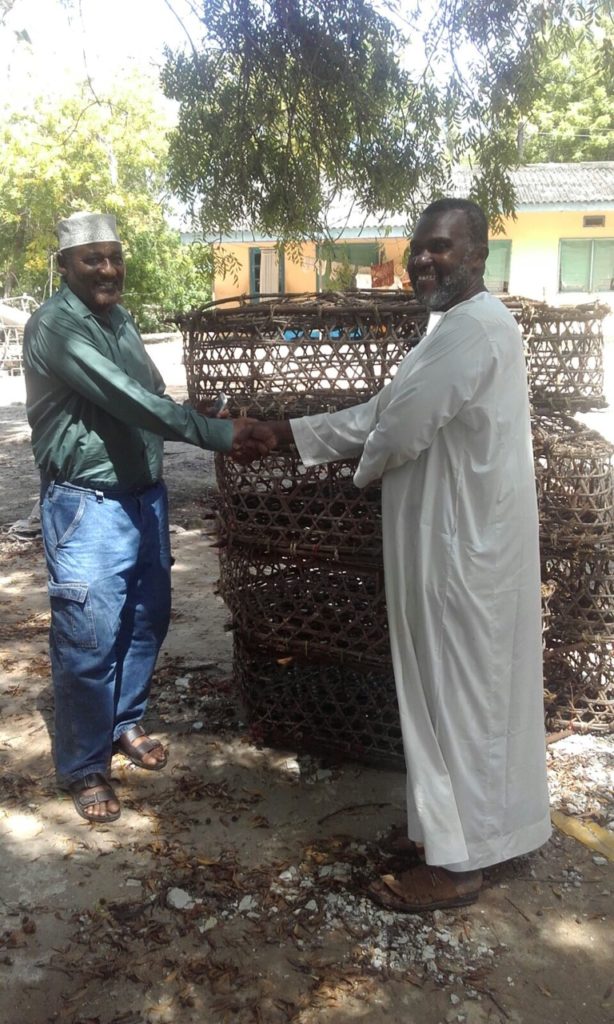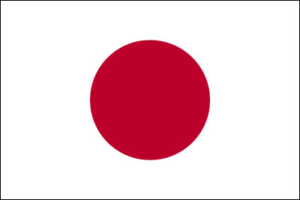The Kenyan coastline stretches along the Indian Ocean for almost 400 miles, from the Somalia border south to Tanzania. It is richly endowed with coral reefs, seagrass beds, fisheries, and mangrove forests. Increasing populations, limited livelihood options, and climate change, however, are exerting pressure on these valuable marine resources. Illegal fishing practices, overfishing, and pollution have led to declining fish catches and loss of reefs and seagrass beds. Fishing regulations are not well enforced. Illegal fishing gear, such as beach seines, small-mesh nets, and monofilament nets, has proliferated. However, traditional fishing gear, such as the basket trap and fence trap, remains popular.
This Seacology grant will promote the use of specially modified traditional fish traps with escape gaps. These traps reduce risks to sensitive coral reef ecosystems. They reduce the incidental catch of juvenile and non-target species, including sea turtles, by letting these creatures escape.
Seacology has funded previous successful projects on Wasini and Pate Islands, and both communities strongly support continued conservation efforts. Seacology’s support will allow the purchase of 70 traps of traditional design, but constructed with longer-lasting modern materials. These traps will be distributed to fishers who have already shown enthusiastic support for this more sustainable fishing method. They will use the traps in the waters around Wasini and Pate, where restricted fishing areas totaling 1,532 acres have already been established.


